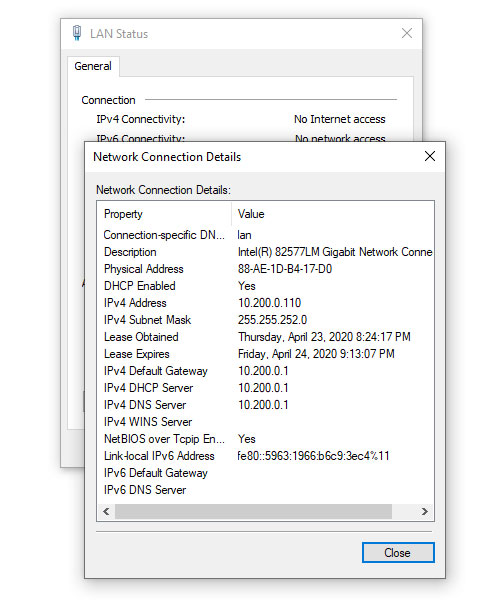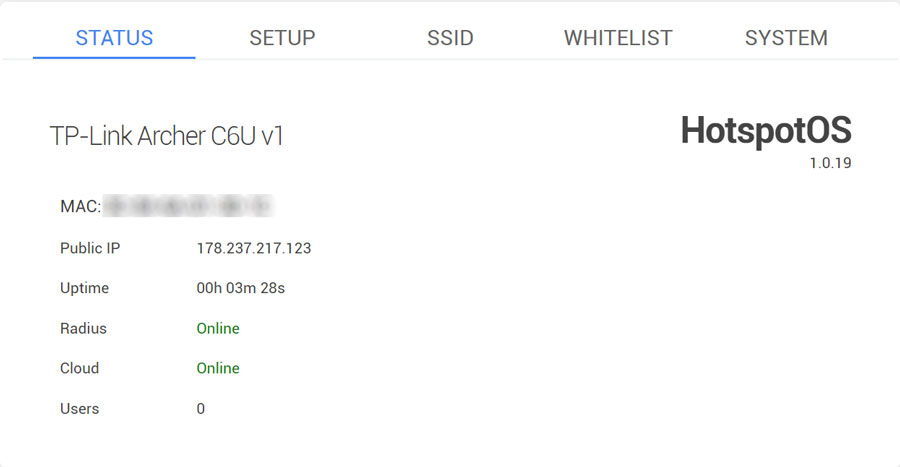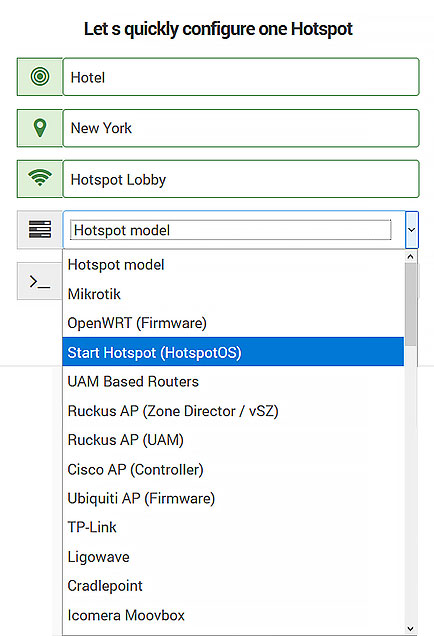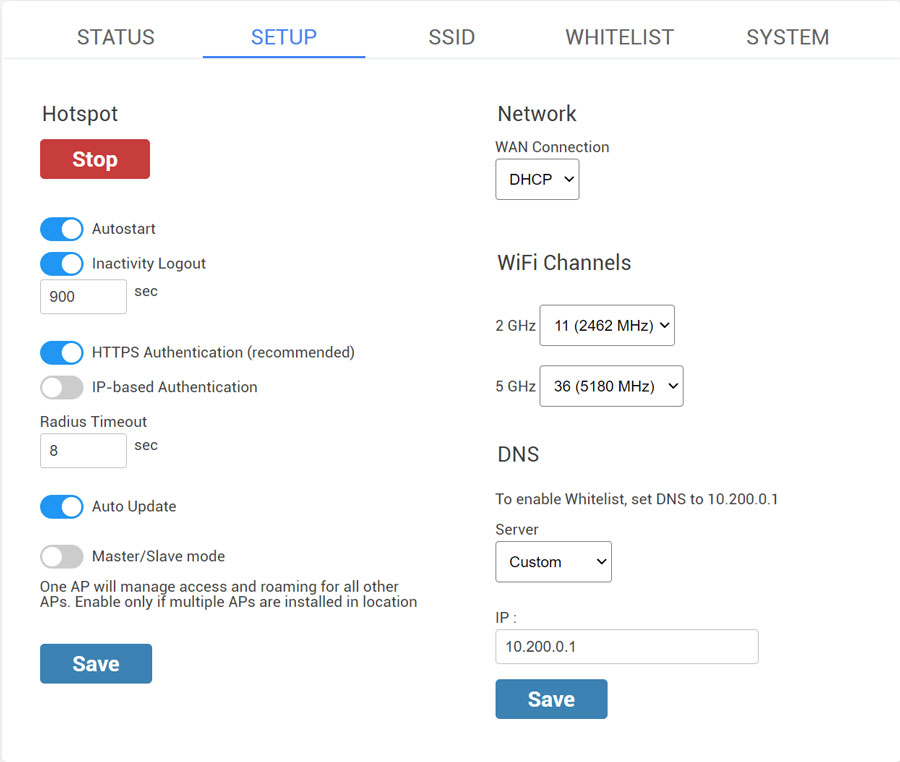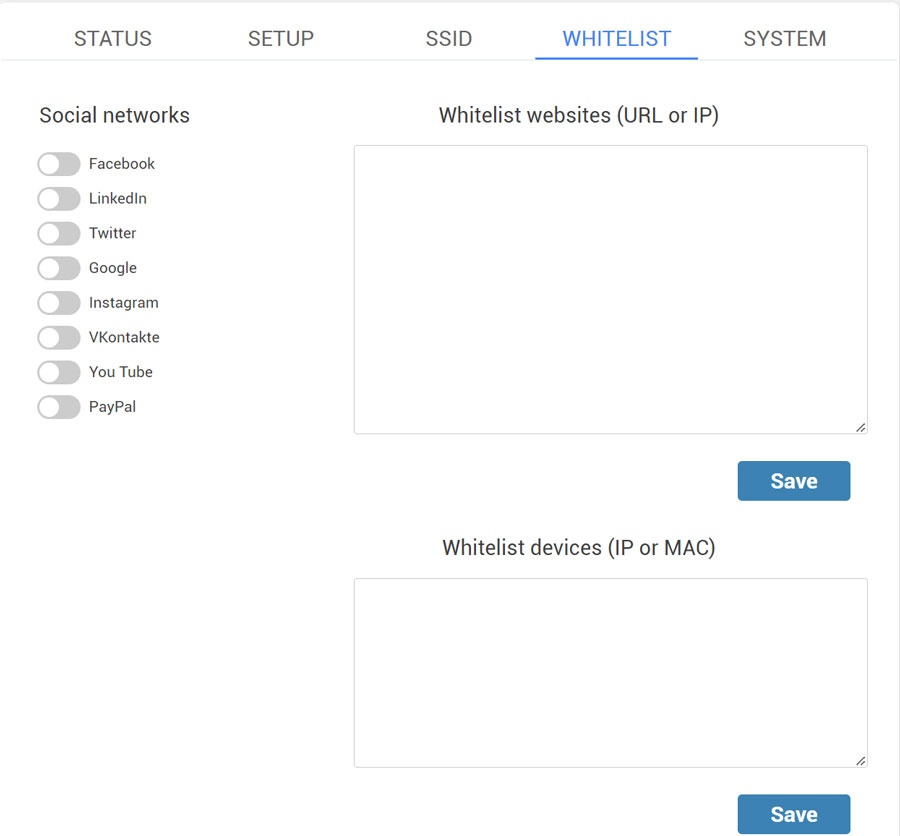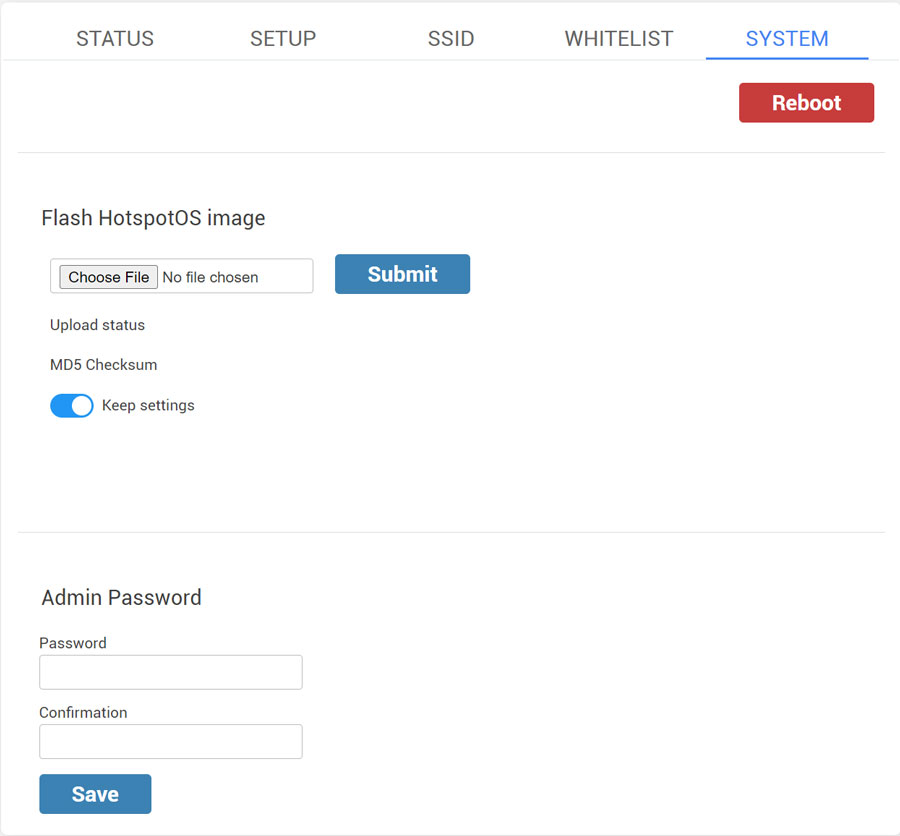Please select a model and download HotspotOS.
DownloadHotspotOSConfigurationTroubleshoot
Please reset the AP / WiFi router to factory settings to avoid problems with some previous configuration.
Connect your computer LAN using the cable to the router Ethernet port.
Set the static IP address in 192.168.1.x range
In the address bar of the web browser, enter 192.168.1.1 and login using admin as username and admin as password.
From the main dashboard screen, click on Setup Wizard.
Go to the Firmware Management section.
Press the Browse button.
Navigate to the location where the HotspotOS for your model is downloaded and press Open.
Click Upload to complete the HotspotOS installation.
The HotspotOS installation procedure can take a few minutes.
During this process, you will see information about the processing.
Reconnect LAN cable or Disable/Enable NIC card in order to get new valid IP address in 10.200.0.x range from router.
Start your browser and in URL field type http://10.200.0.1:8089/ to login to HotspotOS.
Username: admin
Password: admin
Press the Login button to access to Status tab.
On the HotSpotOS Status page, you can check AP MAC address, Public IP, device Uptime, Radius and Cloud status, and a number of users connected to AP.
The MAC address of your AP will be used in the SignUp process.
During SignUp, after typing HotSpot name, select as HotSpot model HotspotOS, and add your MAC address from the Status tab.
From the Setup page configure your AP.
The Hotspot is started and the Autostart and Inactivity Logout options are active by default.
Inactivity Logout is set to 900 sec. Inactivity period defines how long will the device stay logged-in without activity. This prevents repeated logins if the connection temporarily breaks.
IP-based Authentication is used to switch AP domain ap.wifihotspot.io to 10.200.0.1
It is recommended to disable this option to avoid issues with https-based websites.
Radius Timeout – 8sec
Auto Update – enabled
Master/Slave mode
One AP will manage access and roaming for all other APs.
Enable only if multiple APs are installed in a location.
By default as Network WAN Connection is set DHCP, but you can choose network protocol based on your needs. Our recommendation is to use DHCP Network Protocol.
WiFi channels – Eleven channels are designated in the 2 GHz range, spaced 5 MHz apart from each other. Those eleven channels in the spectrum are allowed anywhere in the world.
DNS – Custom
IP – 10.200.0.1
Save changes.
From the SSID tab, you can Enable SSID 1 and 2.
Configure the SSID name and enable it.
Secondary SSID 2 is mostly used for staff WiFi with WPA2 password but you can also enable Hotspot on it.
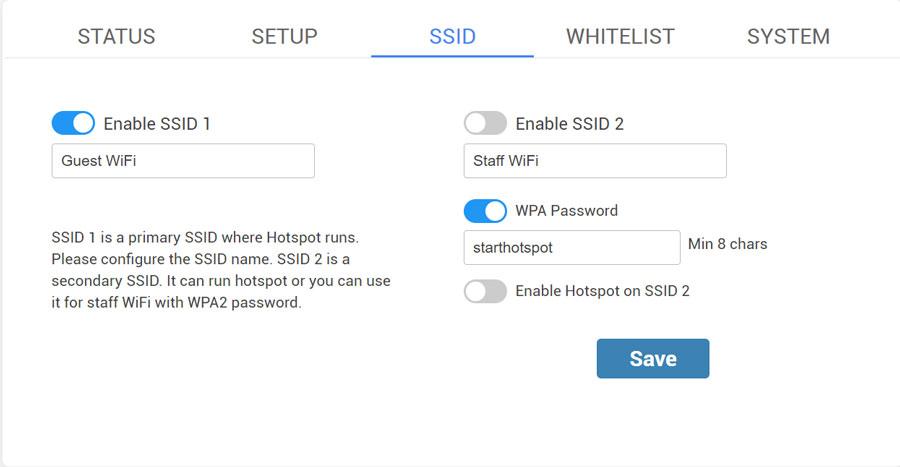
If you want to use Social network login feature or Paypal as payment gateway, enable it on the Whitelist tab and Save changes.
You can also whitelist websites based on URL, IP, or MAC.
From the System tab, you can flash HotspotOS image and change the Admin password.
When you finish setup, restart the AP / WiFi router to apply changes.
PowerCloud HotspotOS Download
PowerCloud Systems CR5000
Download HotspotOS
OEM installation using the TFTP method (via ramdisk):
One boots a ramdisk image and then does a normal HotspotOS installation.
Specific values needed for TFTP
If one holds the WPS button and then (with button pressed) powers on the device (holding WPS button for 5-7 seconds) the device will attempt to download a ramdisk image named ap.bin from a TFTP server (but only using the WAN port) at 192.168.1.10.
Note that for 17.xx or 18.xx using the snapshot below will require the use of sysupgrade -F. Also note that some devices will attempt to load from 192.168.1.17 and that if the u-boot environment has been corrupted the ramdisk image will need to be named vmlinux.uImage.
Bootloader tftp client IPv4 address – 192.168.1.1 on the WAN port
Firmware tftp image – Ramdisk from ‘snapshots’ (NOTE: Must renamed as ap.bin (or, if u-boot environment is corrupt, vmlinux.uImage))
TFTP window start – approximately 5-7 seconds after power on
TFTP server required IP address – 192.168.1.10 (on some devices 192.168.1.17)
PowerCloud Systems CR3000
Download HotspotOS
OEM installation using the TFTP method (via ramdisk):
One boots a ramdisk image and then does a normal HotspotOS installation.
Specific values needed for TFTP
If one holds the WPS button and then (with button pressed) powers on the device (holding WPS button for 5-7 seconds) the device will attempt to download a ramdisk image named ap.bin from a TFTP server (but only using the WAN port) at 192.168.1.10.
Note that for 17.xx or 18.xx using the snapshot below will require the use of sysupgrade -F. Also note that some devices will attempt to load from 192.168.1.17 and that if the u-boot environment has been corrupted the ramdisk image will need to be named vmlinux.uImage.
Bootloader tftp client IPv4 address – 192.168.1.1 on the WAN port
Firmware tftp image – Ramdisk from ‘snapshots’ (NOTE: Must renamed as ap.bin (or, if u-boot environment is corrupt, vmlinux.uImage))
TFTP window start – approximately 5-7 seconds after power on
TFTP server required IP address – 192.168.1.10 (on some devices 192.168.1.17)
PowerCloud Systems CAP324
Download HotspotOS
OEM easy installation
If you have an stock AP you can do the following:
Make sure you can connect to the AP with your PC, but make sure the AP will not get an DHCP assigned address (the easiest way to do this is to connect the PC directly to the AP’s ethernet interface).
Perform a factory reset using the reset button (hold for 10-12 seconds and release).
Once the device has completely rebooted, browse to https://192.168.101.55
Login to the web interface as ‘admin’ with password ‘password’.
On the “CloudCommand™” tab select the “CloudCommand™” submenu.
Uncheck “CloudCommand® On”.
Click “Save & Apply”.
Click on the “Status” Tab.
Login to the web interface.
On right hand of the banner (bottom of the banner), select “Administration”.
Select “System|Backup / Flash Firmware”.
Uncheck “keep settings”.
Browse to the HotspotOS image you downloaded.
Select “Flash Image…”
Verify the checksum and click “Proceed”.
The AP will flash HotspotOS and reboot.
You should be good to go!

 PowerCloud
PowerCloud